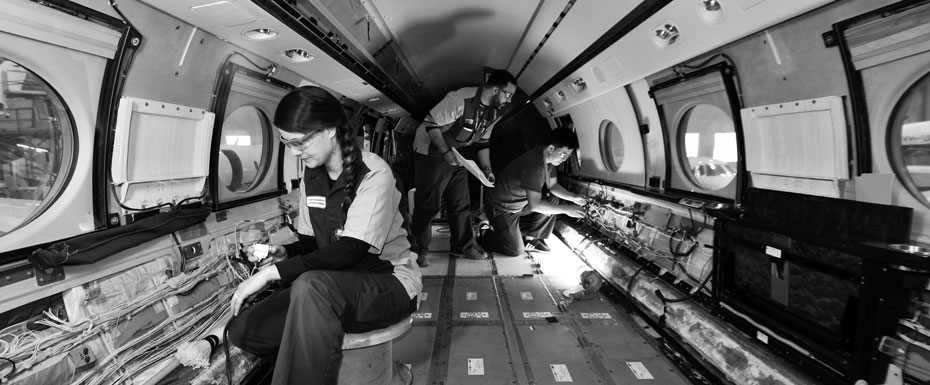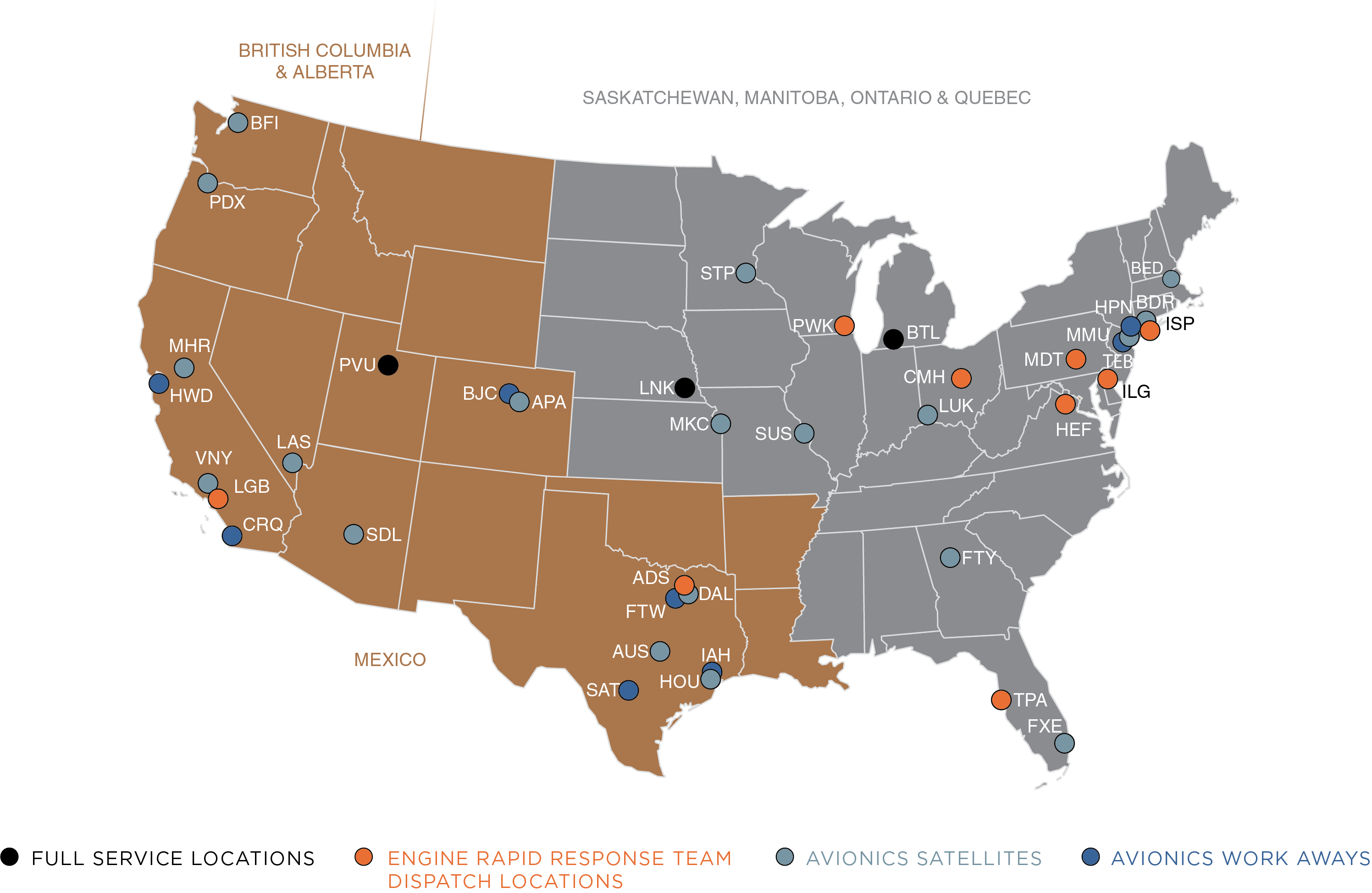Last Sunday, some aircraft operators reported issues with GPS and GLU units not acquiring GPS constellations. The reports specifically involve the Collins Aerospace GPS-4000S and GLU-2100. The root cause appears to be a software error that occurred after an almanac update completed by the U.S. on June 9. The next scheduled update is set for next Sunday, June 16, and that update should not include the information that triggered the error. If you have not powered up your units, it is recommended that you leave them off until after June 16, 2019 00:15Z.
Please see the letter from Collins Aerospace for more details.
For more information, contact a Duncan Aviation Regional Avionics Sales Manager.

For the last several years, one of the avionics pushes in the business aviation industry has been to ensure operators meet the FAA’s January 1, 2020, mandate deadline for upgrading to ADS-B (Automatic Dependent Surveillance-Broadcast). With their ADS-B requirements completed, many customers are turning their attention to other avionics upgrades, such as faster and more reliable Wi-Fi systems and newer cockpit LCDs that will support performance enhanced navigation, enhanced weather products and traffic information, and synthetic and night vision systems.
“He (the owner) opted for this system (AVANCE L5) because it supports up to 40 devices, so he and his passengers can now all stream audio and video and connect via VPN to their company’s network so they can continue working in flight.”
One of the most common requests for Wi-Fi is for speeds and reliability in the air to compare to what customers receive on the ground.
“We’ve done numerous quotes for the Gogo AVANCE L5 Wi-Fi system,” says Jeff Aman Manager of the Duncan Aviation Satellite Avionics Shop in Kansas City, Missouri. “The owner of a Global Express recently replaced a legacy ATG Wi-Fi system with the AVANCE L5. He opted for this system because it supports up to 40 devices, so he and his passengers can now all stream audio and video and connect via VPN to their company’s network so they can continue working in flight.”
Regional Avionics Sales Manager John Spellmeyer notes that customers are increasingly interested in connectivity and are already looking forward to systems that will be 5G network capable. Currently, there are numerous ways to take advantage of the greater speeds available, and Duncan Aviation owns or has access to STCs for a variety of systems on a great variety of aircraft makes/models.
“Speeds are definitely getting faster as aging infrastructure is replaced, and we’re anticipating new products that will take advantage of 5G. Right now, though, I’ve spoken to many customers who are turning their attention to avionics upgrades that reduce operating costs and enhance safety,” says John.
“WAAS/GPS-enabled performance-based approaches such as LPV can guide the pilot to within 200 feet of the ground with ½-mile visibility. The FAA has already published more than 9,500 of these new, highly accurate WAAS/GPS-based instrument approaches, arrivals, and departures.”
Many of the systems that support ADS-B In feature high-resolution cockpit LCDs that dramatically improve what pilots see through their synthetic vision and night vision cameras, John explains. “WAAS/GPS-enabled performance-based approaches such as LPV can guide the pilot to within 200 feet of the ground with ½-mile visibility. The FAA has already published more than 9,500 of these new, highly accurate WAAS/GPS-based instrument approaches, arrivals, and departures.”
The new high-resolution displays combined with low-light and infrared cameras bring dramatically increased clarity to the cockpit.
“When flying in the clouds, on approach for a landing in, say, Aspen, Colorado, these new synthetic vision systems give you not just an awareness of the mountainous terrain or potential obstacles, but actual visual images of them,” says John. “The cameras pick up and project remarkably clear images using low-light capabilities and thermal energy, so you see what amounts to a daylight image of a deer on the runway or a clear view of a really small, not well-lit runway in the mountains.”
As many cockpit displays such as CRTs and older LCDs are reaching obsolescence, upgrading them gives pilots and their passengers even more peace of mind.
The FAA has issued instructions for non-compliant aircraft that want to fly in ADS-B airspace after January 1, 2020. The flight is supposed to be for aircraft relocation so it can be modified. Here’s what the April 1, 2019, directive had to say:
“The FAA has made it clear that the mandate compliance date will not be extended or delayed, and that the process by which you can make an occasional flight through ADS-B airspace will be as cumbersome and uncertain as possible.”
Matt Nelson, Manager of Satellite Operations
After Jan. 1, 2020, all aircraft operating in the airspace identified in §91.225 must comply with the ADS-B Out equipment and performance requirements.
Operators of aircraft not equipped with ADS-B-Out must request a deviation at least 1 hour before the flight from the ATC facility with jurisdiction over the airspace. Requests are considered on a case-by-case basis, and authorizations may be declined due to workload, runway configurations, air-traffic flows, and weather conditions among other reasons.
“The FAA has made it clear that the mandate compliance date will not be extended or delayed, and that the process by which you can make an occasional flight through ADS-B airspace will be as cumbersome and uncertain as possible,” says Matt Nelson, Manager of Satellite Operations at Duncan Aviation.
Those operators not yet in compliance with ADS-B might have some struggles finding capacity at their preferred MRO facility. Duncan Aviation will do everything possible to try and help customers in this unfortunate position. Contact one of our Regional Avionics Sales Managers to see how we can help.
